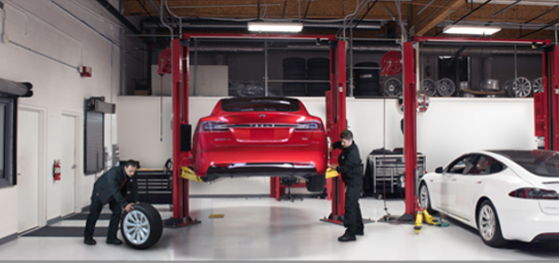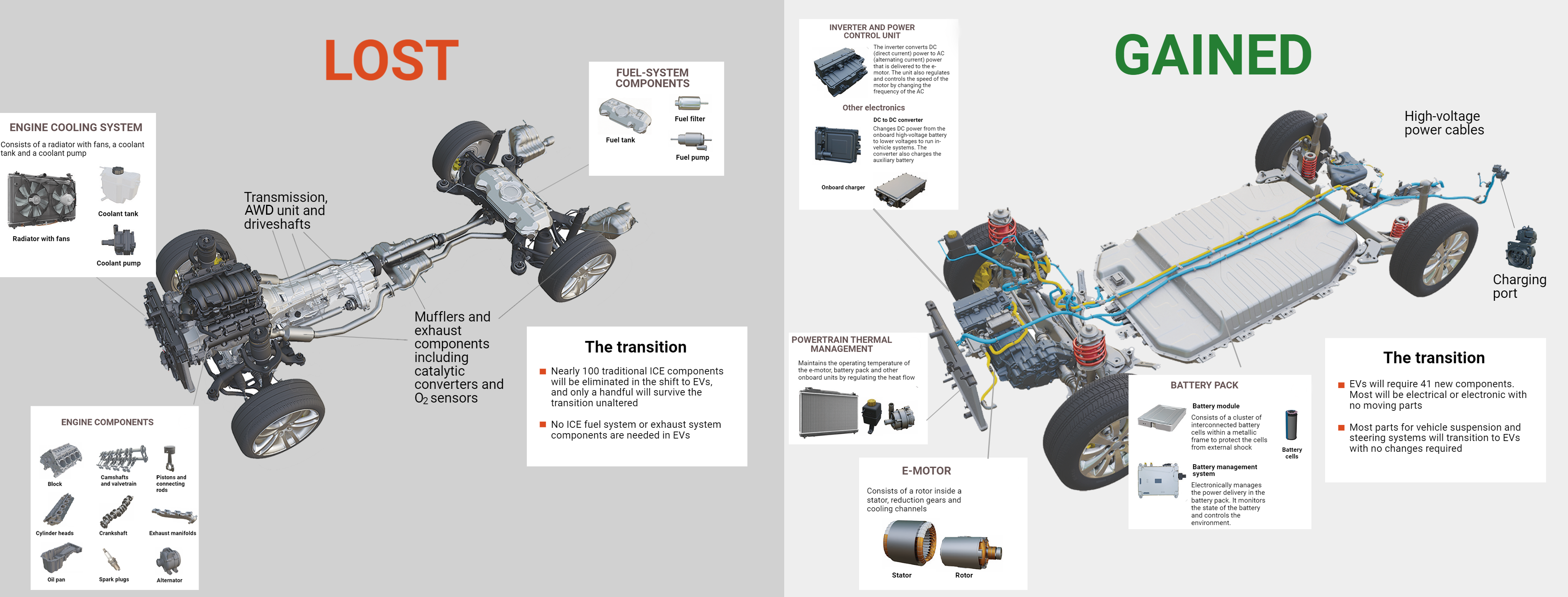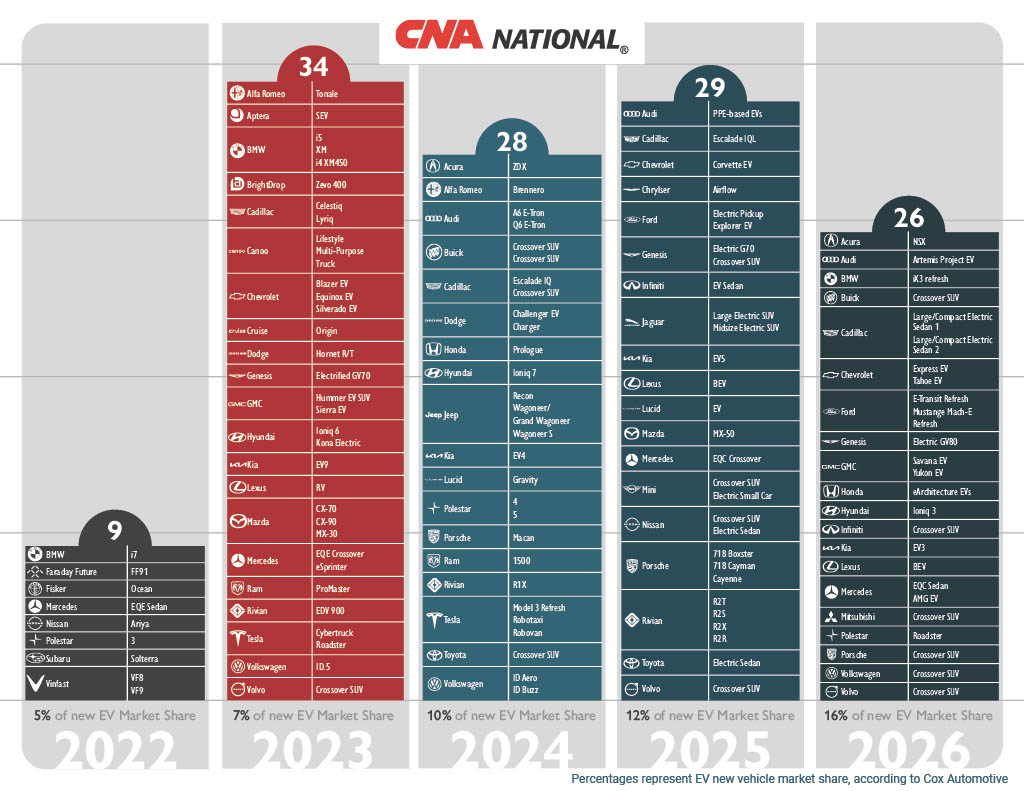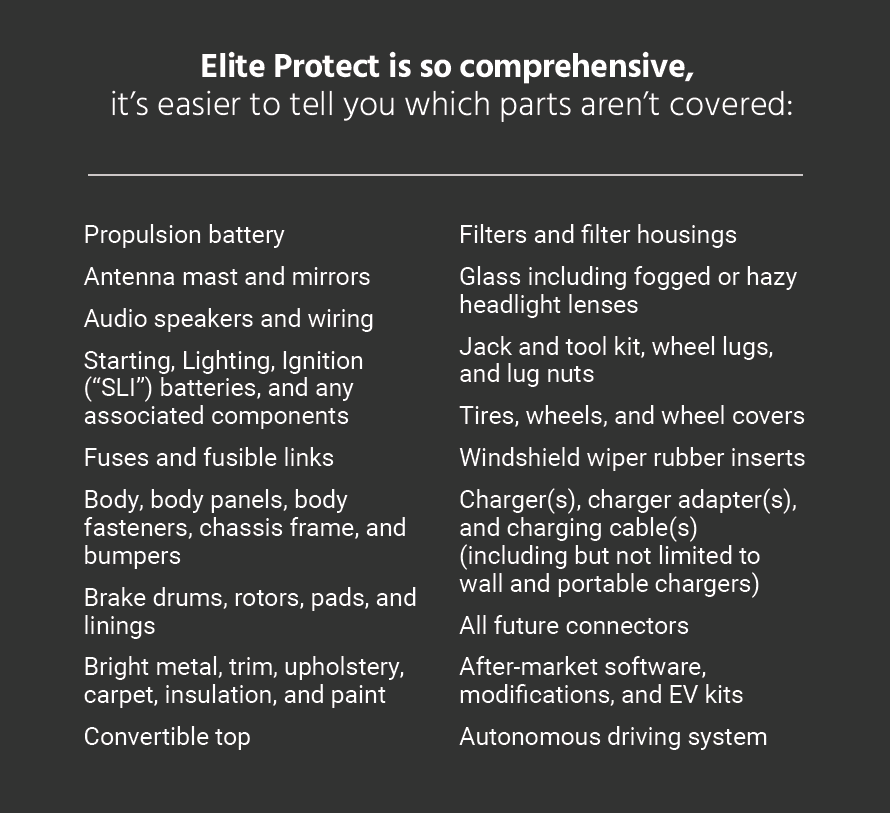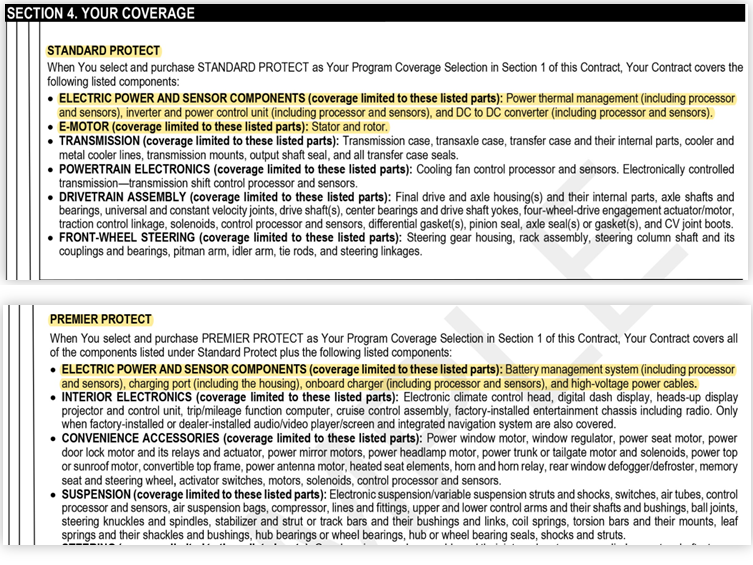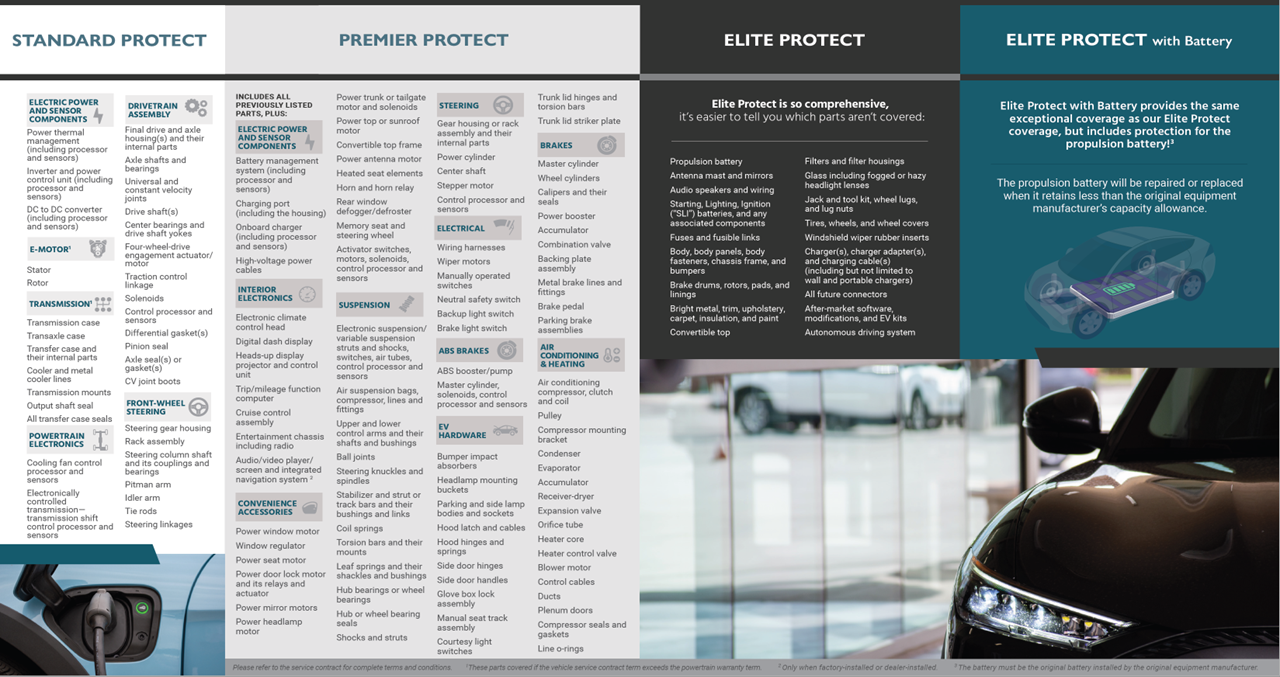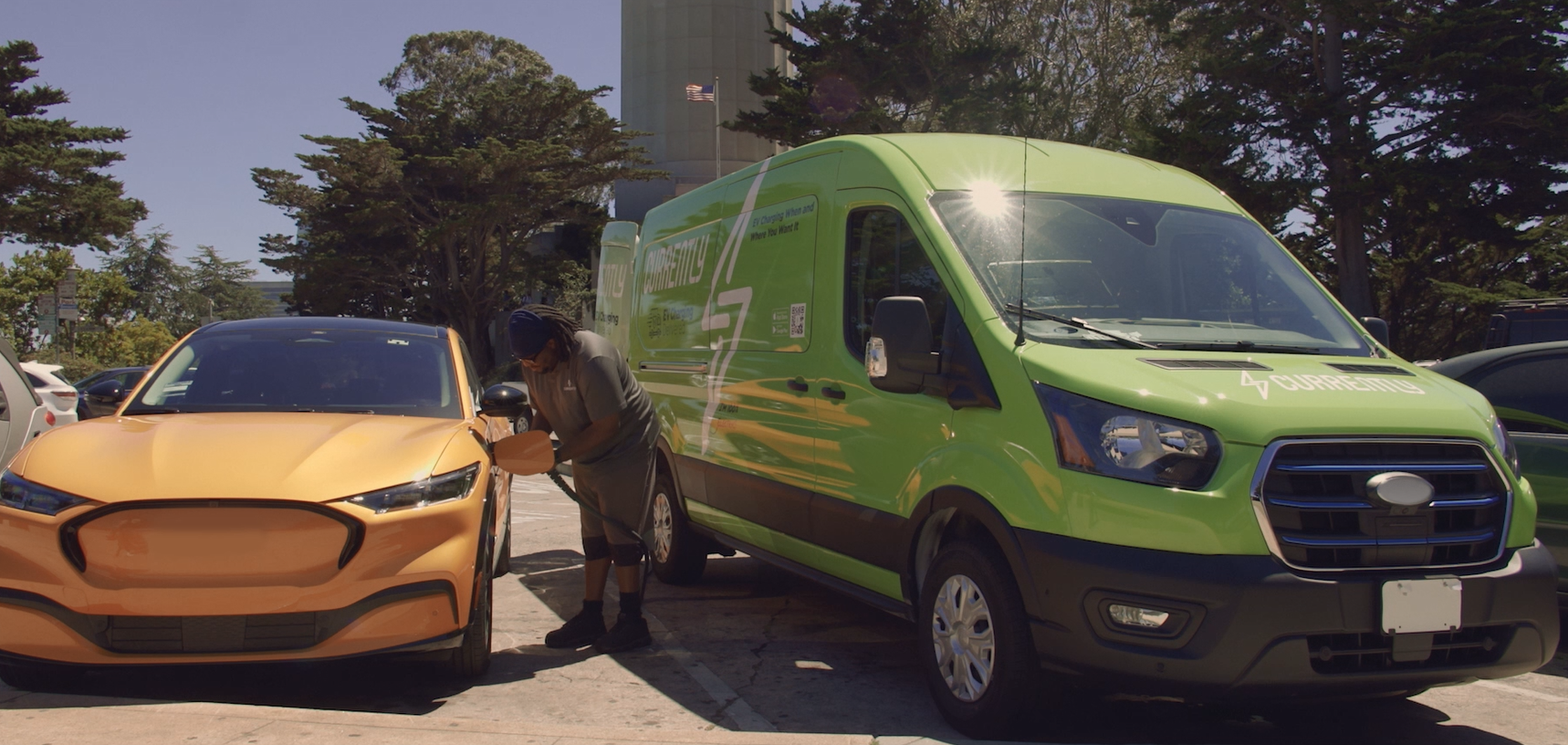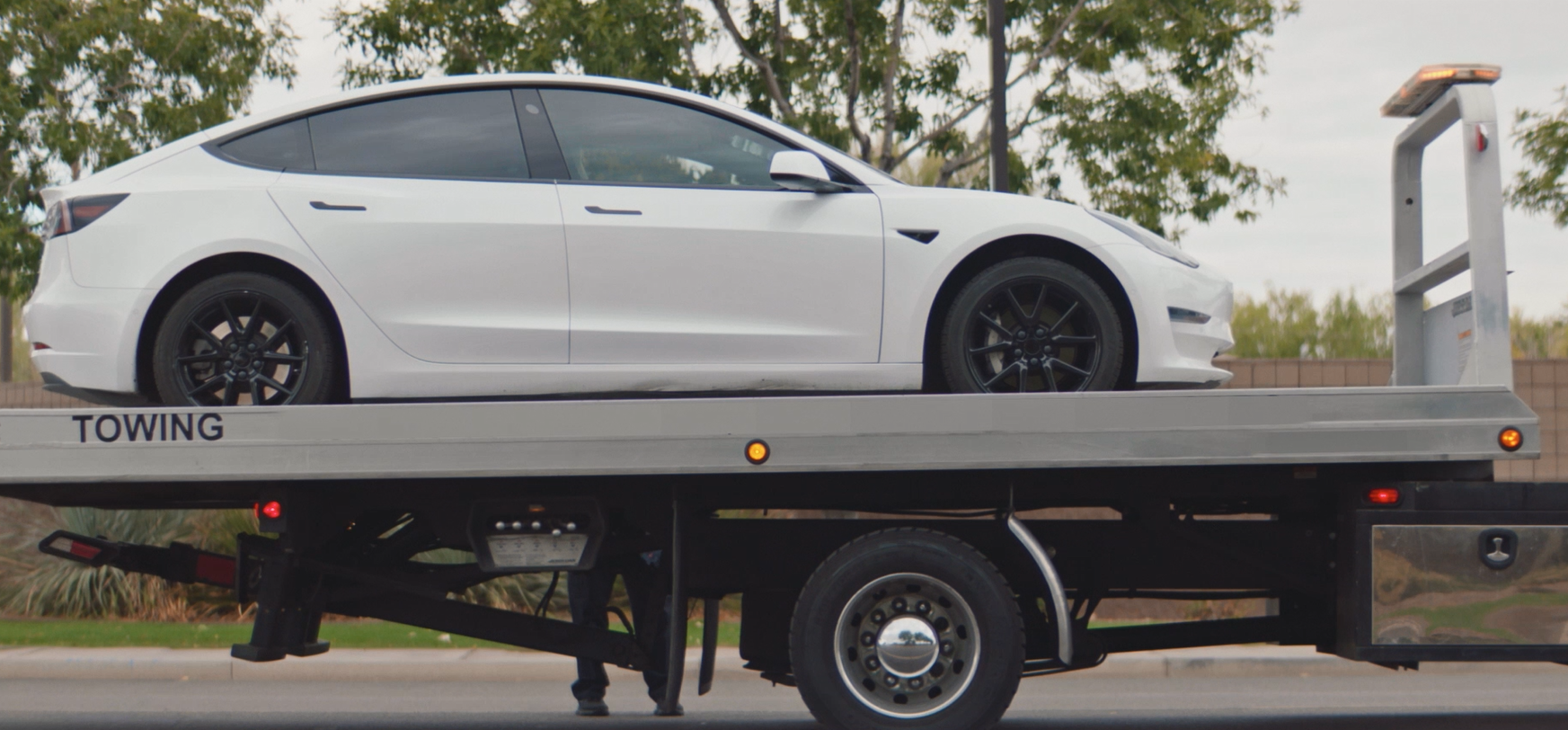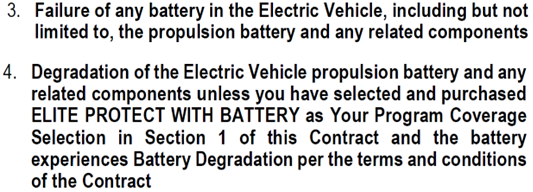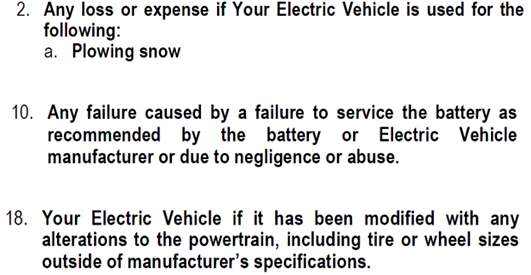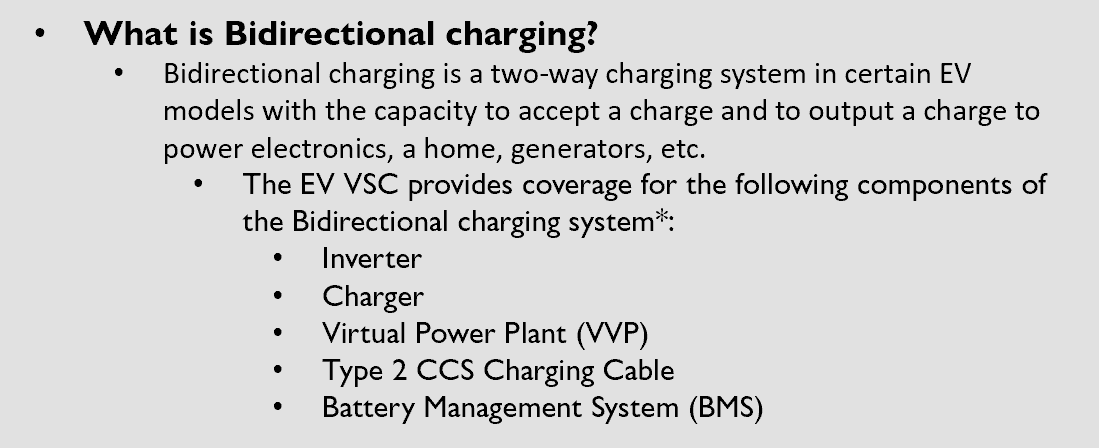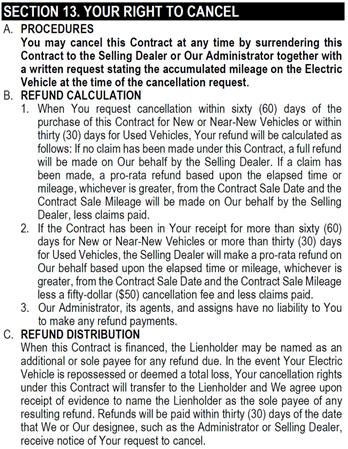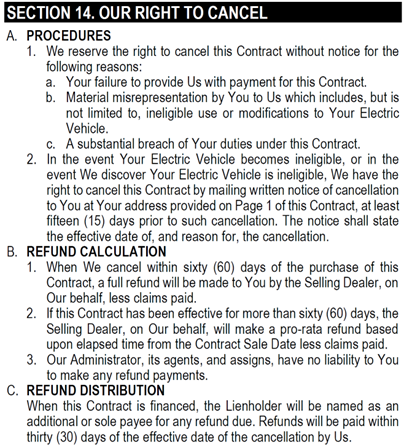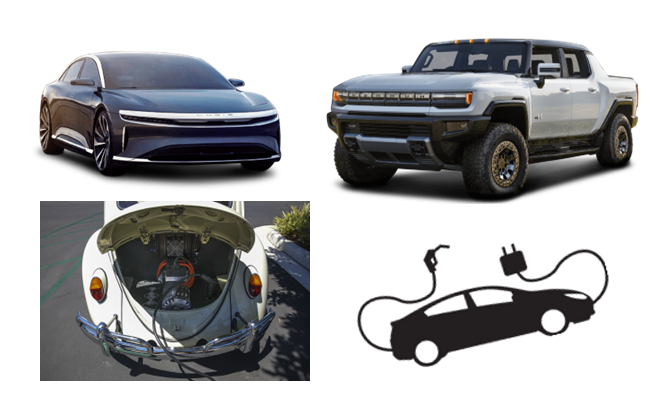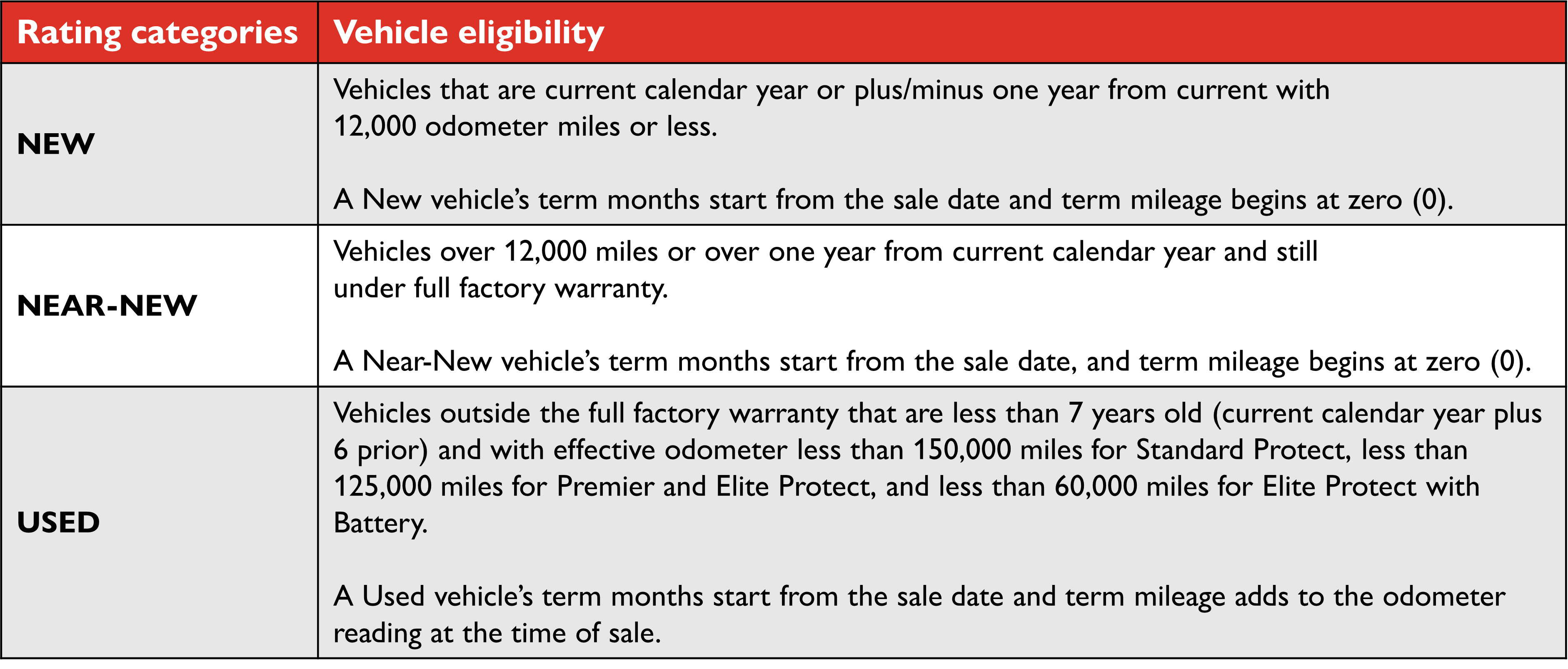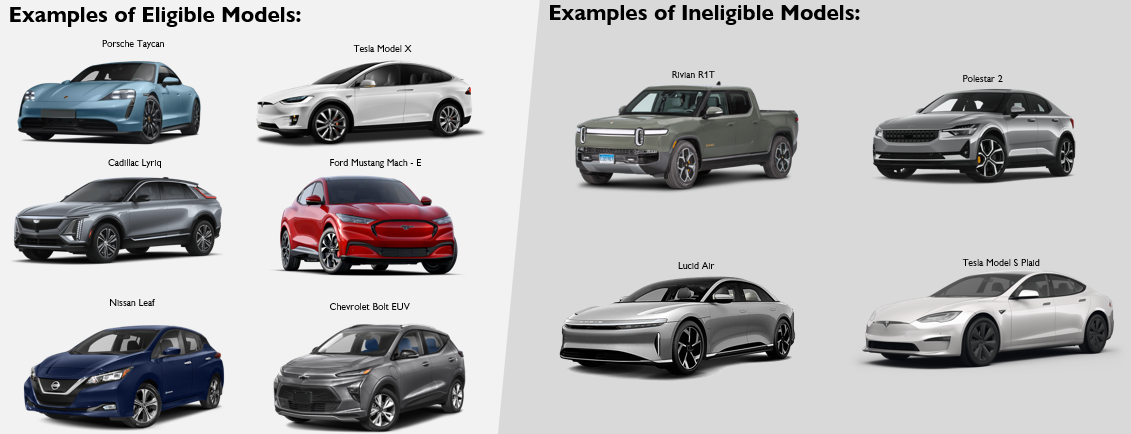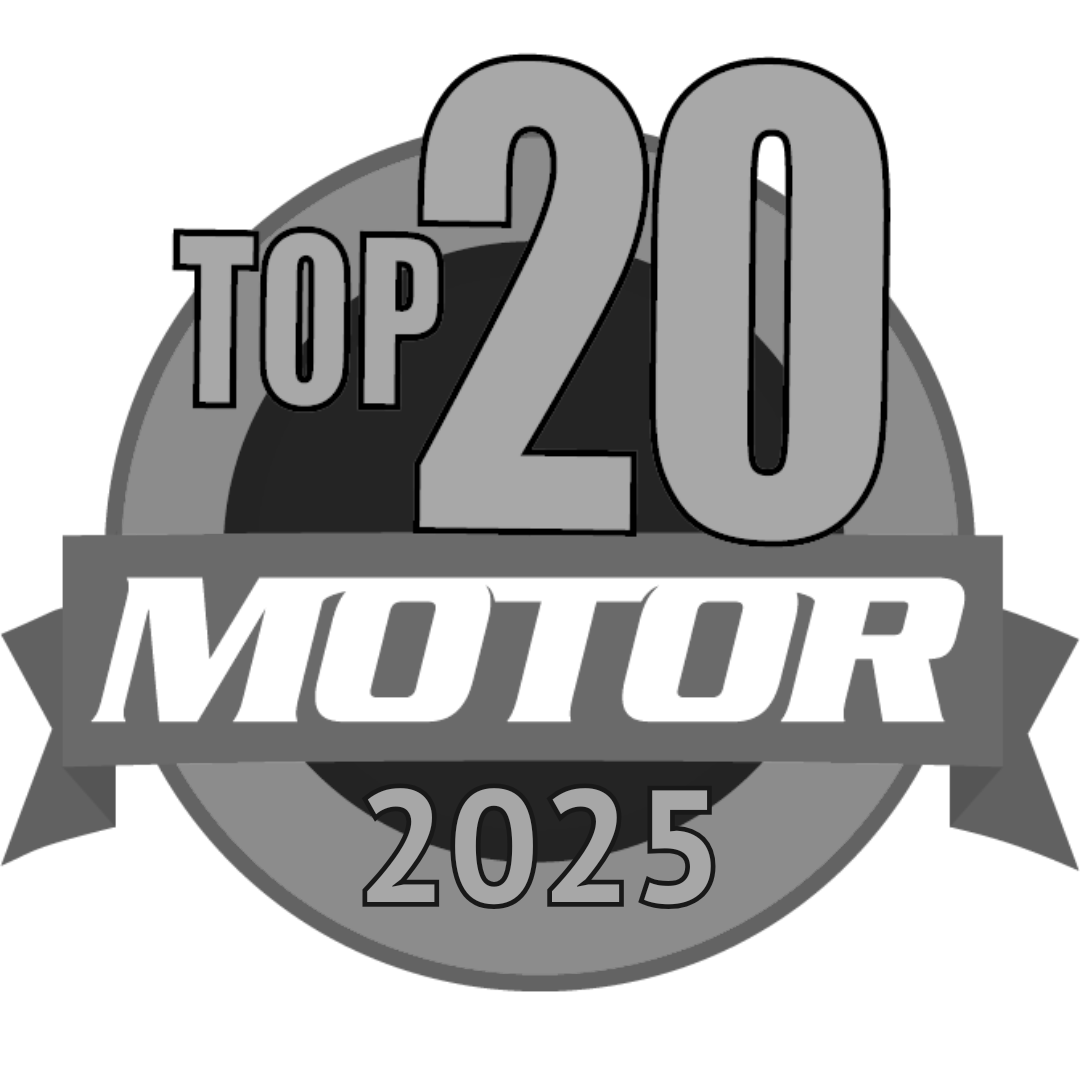CNA National Dealer Learning
Module 1: EV Education
Knowledge Check
Question 1: Can EVs only be charged at manufacturer-specific charging stations?
Yes, EVs must be charged at their manufacturer-specific charging station No, EVs can be charged at any charging station with the correct plug type or with the use of a correct charging adapter
Question 2: Are all manufacturer propulsion battery warranties 8 years/100,000 miles?
Yes, all factory warranties for propulsion batteries are 8 years/100,000 miles without any exceptions No, all factory warranties for propulsion batteries are AT LEAST 8 years/100,000 miles per federal mandate, but some manufacturers have gone beyond the federal mandate to offer expanded coverage
Submit
Module 2: Contract Review (Part 1)
Knowledge Check
Question 1: How many tiers of coverage include the propulsion battery?
1 2 None All tiers
Question 2: Which types of coverages are available under EV VSC?
Stated Exclusionary Stated and Exclusionary
Submit
Module 3: Contract Review (Part 2)
Knowledge Check
Question 1: What is Limp Along Coverage?
Flat-bed towing service Portable charging service Tire replacement service Lock out assistance
Question 2: Does the EV VSC cover rideshare?
Yes, always Yes, if terms of the contract are met No
Submit
Module 4: Eligibility
Knowledge Check
Question 1: Is bidirectional charging covered under the contract?
Yes Yes, but only the specific components that are utilized for bidirectional charging No
Question 2: Is autonomous driving covered under the contract?
Yes Yes, but only the specific components that are utilized for autonomous driving No
Submit

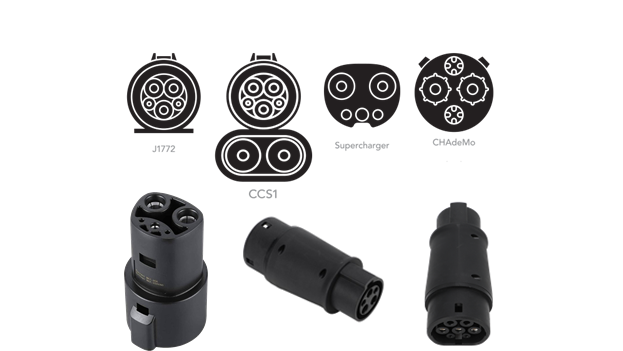
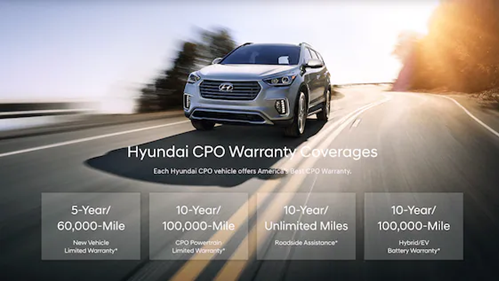 OEM example of going beyond 8 yrs and 100,000 miles
OEM example of going beyond 8 yrs and 100,000 miles